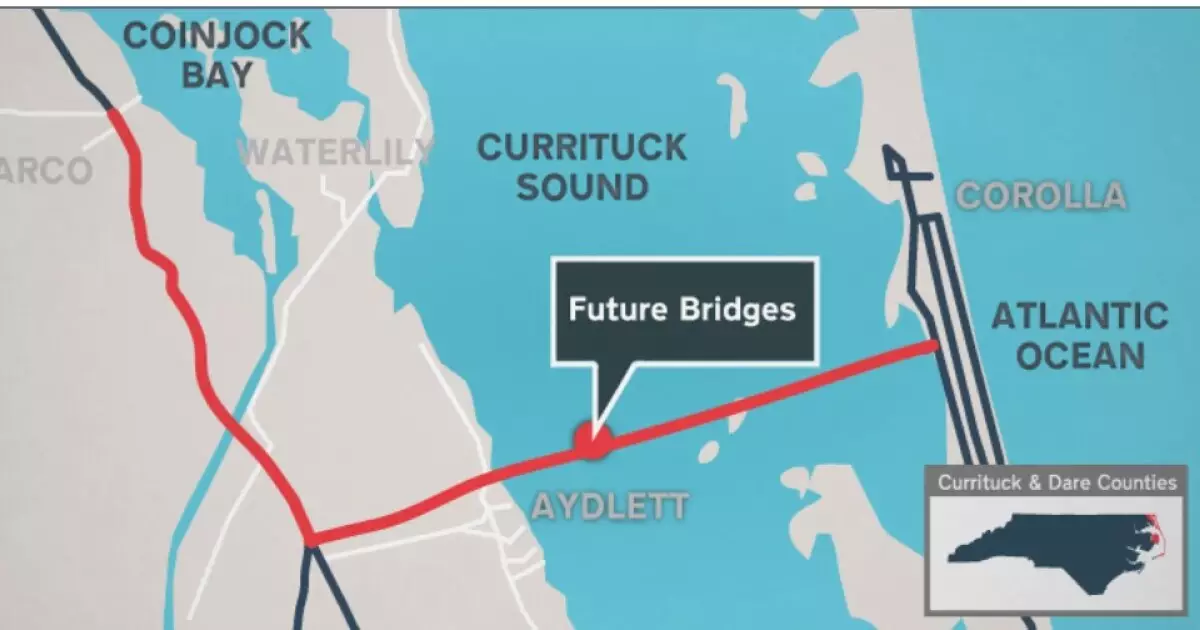The state of North Carolina is embarking on its most ambitious transportation project yet, as it seeks to combat the increasing congestion along the crucial I-77 corridor in Charlotte. This endeavor, valued at a staggering $3.7 billion, involves widening the highway to a total of ten lanes by integrating two express lanes in each direction over an 11-mile stretch. Central to the project’s future is a recent decision by the Charlotte City Council and the Charlotte Regional Transportation Planning Organization (CRTPO), which granted the North Carolina Department of Transportation (NCDOT) the authority to initiate a 50-year concession—a public-private partnership strategy aimed to accelerate project completion.
The pressing need for this expansion is underscored by a painful statistic: every year that the project faces delays results in an additional $100 million in costs. NCDOT officials have candidly acknowledged that the state lacks the financial capabilities to fully fund such an ambitious undertaking independently, framing the P3 model as a critical avenue to turn plans into reality.
Public-private partnerships, while not without their critics, offer a streamlined approach to large-scale infrastructure development that can alleviate strain on public budgets. The recent approval positions the North Carolina government to potentially harness global expertise, as NCDOT anticipates strong interest from firms around the world. This opportunity not only promises to expedite construction timelines but also aims to deliver a more efficient process, as evidenced by a 2019 study indicating that utilizing a P3 delivery method could reduce costs by approximately $500 million compared to traditional delivery methods.
A pivotal aspect of this project is the need for transparency and accountability to ensure that the lessons learned from past endeavors—particularly the contentious toll lanes on I-77 North—are sufficiently integrated. The original express toll lanes, managed by the Spanish firm Cintra, led to considerable dissatisfaction among commuters, resulting in scrutiny from local authorities and representatives. NCDOT officials expressed their commitment to establish a more favorable agreement this time, reflecting the community’s apprehensions and aspirations.
Despite the unanimous support from the Charlotte City Council to advance the P3 initiative, skepticism looms large among local residents and stakeholders. The history of the I-77 North express lanes haunts the current project. There is an ongoing debate about the impact of tolls on drivers and whether they constitute an equitable solution to traffic congestion. Council member Ed Driggs articulated the dilemma facing decision-makers, stating, “We understand managed lanes are not popular, and the I-77 North experience was bad.” Nevertheless, he emphasized the necessity to advance the planning process to forestall further cost escalations.
As the CRTPO continues to navigate the intricacies of regional transportation needs, the board committed to collaborating closely with NCDOT to refine the project’s terms. Such proactive engagement is essential to address community concerns and ensure the apprehensions raised by past experiences are not repeated. This sentiment is increasingly shared among stakeholders who are invested in sustainable and equitable transportation solutions.
Future Prospects for North Carolina’s Transportation Landscape
The I-77 South expansion isn’t the only major infrastructure undertaking on the horizon; it reflects a growing trend among southern states in leveraging public-private partnerships for transportation projects. As Georgia and Tennessee make strides in this arena while Florida also eyes future toll road initiatives, North Carolina’s involvement underscores a shift in how transportation infrastructure is conceived and financed.
Moreover, the Mid-Currituck bridge represents another critical P3 effort by NCDOT, aiming to enhance a key traffic artery along the North Carolina coast. The proposed $1 billion tolled bridge seeks to alleviate congested routes, ensuring swift evacuations during emergencies.
All eyes are on North Carolina as state officials embark on this historic transportation project. The convergence of financial necessity, community engagement, and modern project delivery methods can potentially reshape the infrastructure landscape of the region. While the venture is fraught with challenges, it also presents a moment of opportunity to innovate and set new standards in public-private collaborations. The ongoing dialogue between government entities and the public will be fundamental in fostering trust and ensuring that transportation options evolve to meet the sustainable needs of the community. For North Carolina, the stakes have never been higher, nor the potential impacts more far-reaching.


Leave a Reply